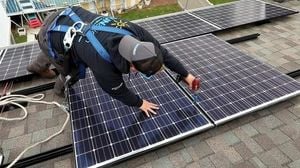The U.S. housing market is showing signs of a slowdown, as existing home sales dropped 5.9% in March 2025, reaching an annualized rate of 4.02 million. This figure marks the slowest pace since January 2024 and falls short of the forecasted 4.14 million sales, raising concerns about the economic outlook.
The decline in sales comes after a brief resurgence in February, where sales had increased by 4.4%. However, the latest data indicates that the housing market is cooling, which is significant given its role as a key driver of the U.S. economy. The current sales rate also reflects a 2.4% decrease compared to the same time last year, and it remains 23% below the pre-pandemic rate of March 2019.
According to the National Association of Realtors (NAR) and Wells Fargo Economics, the sharp 6.4% contraction in single-family transactions was a major contributor to the overall sales drop in March. Notably, every geographic region experienced lower resales, with the sharpest declines observed in the West and South. This widespread downturn in home sales suggests that affordability challenges are impacting buyers across the board.
High mortgage rates, which hovered around 7% in January and February, have continued to affect buyer contracts. Although there was a temporary dip in mortgage rates in March, they have since jumped back up to near 7% in April 2025. This volatility in mortgage rates, combined with rising home prices, has created an ongoing affordability challenge for potential buyers.
Despite the slowdown in sales, there has been a slight improvement in resale inventories. Single-family resale listings rose by 6.5% in March, lifting inventories 18.6% above their level from a year ago. However, this increase in inventory remains significantly below pre-pandemic levels, suggesting that supply constraints will continue to favor price appreciation, further complicating the affordability issue for buyers.
In March, the annual rate of single-family price appreciation softened to 2.9%, marking the lowest annual increase in seven months. While prices are still rising, this slowdown in appreciation indicates that the market may be reacting to the combination of high mortgage rates and increased inventory.
The implications of these trends extend beyond the housing market itself. A healthy housing market is often seen as a barometer of the overall economic strength of the country. When home sales are strong, it can stimulate economic growth through increased consumer spending and job creation. Conversely, a slowdown in the housing market could exert downward pressure on the U.S. dollar and signal potential headwinds for the economy.
Economists and investors are closely monitoring these developments, as the housing market's performance is crucial for gauging the broader economic landscape. The recent figures point towards a potential downturn, prompting concerns that the economic recovery may not be as robust as previously anticipated.
As the market continues to grapple with high mortgage rates and affordability challenges, it remains to be seen how these factors will influence buyer sentiment and overall sales in the coming months. Analysts predict that ongoing economic uncertainty will likely keep the pace of sales running slow, with many potential buyers remaining on the sidelines.
In summary, the latest data on existing home sales reflects a significant slowdown in the U.S. housing market, with sales dropping to a level not seen in over a year. The combination of high mortgage rates, rising prices, and affordability challenges is creating a complex environment for buyers, leading to concerns about the potential impact on the broader economy.



